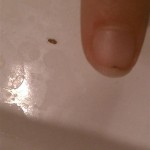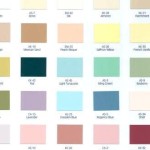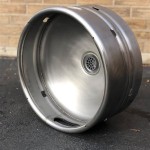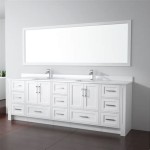How to Clean Up Mold On Bathroom Ceiling
Mold growth on bathroom ceilings is a common household problem, especially in environments with high humidity and poor ventilation. Mold not only presents an unsightly appearance, but it can also trigger allergic reactions and respiratory issues in susceptible individuals. Therefore, prompt and effective mold remediation is essential to maintain a healthy and safe living environment. This article provides a detailed guide on how to clean up mold on a bathroom ceiling, covering safety precautions, necessary materials, and step-by-step cleaning procedures.
Understanding Mold Growth in Bathrooms
Mold thrives in damp, dark, and poorly ventilated areas, making bathrooms particularly vulnerable. The high levels of humidity generated by showers and baths, coupled with inadequate air circulation, create ideal conditions for mold spores to colonize on surfaces. Common bathroom molds include species like *Cladosporium*, *Aspergillus*, and *Penicillium*. These molds can appear as black, green, brown, or white patches on the ceiling, walls, grout, and other surfaces.
Identifying the underlying cause of mold growth is crucial to prevent recurrence. Leaky pipes, inadequate ventilation, and insufficient drying after showering are major contributors. Addressing these issues, such as repairing leaks and improving airflow, is necessary for long-term mold prevention.
Mold spores are naturally present in the air, both indoors and outdoors. However, mold only becomes a problem when these spores find a suitable environment to grow and multiply. In a bathroom, this environment is often characterized by elevated moisture levels and readily available organic materials, such as soap scum, dust, and cellulose in drywall.
Left unchecked, mold can spread rapidly, damaging building materials and posing health risks. Regular cleaning, proper ventilation, and moisture control are vital for preventing mold growth in the bathroom.
Safety Precautions Before Cleaning Mold
Prioritizing safety is paramount when cleaning mold, as exposure to mold spores can be harmful. Individuals with allergies, asthma, or compromised immune systems are particularly susceptible to adverse health effects. The following safety precautions should be observed:
Personal Protective Equipment (PPE): It is essential to wear appropriate PPE to minimize exposure to mold spores. This includes:
- Respirator: A NIOSH-approved N-95 respirator or a more protective respirator (e.g., a half-face respirator with P100 filters) should be worn to prevent inhalation of mold spores.
- Gloves: Wear non-porous gloves, such as rubber or nitrile gloves, to protect the skin from contact with mold and cleaning solutions.
- Eye Protection: Goggles or safety glasses should be worn to prevent mold spores and cleaning solutions from entering the eyes.
- Protective Clothing: Wear long-sleeved shirts and pants to minimize skin exposure. Consider wearing disposable clothing that can be discarded after cleaning.
Ventilation: Adequate ventilation is crucial to prevent the buildup of mold spores and cleaning solution fumes. Open windows and doors to increase airflow, and use a fan to exhaust air outside the bathroom.
Isolate the Area: If the mold infestation is extensive, consider sealing off the bathroom from the rest of the house to prevent spores from spreading. This can be done by using plastic sheeting and duct tape to cover doorways and other openings.
Inform Others: Inform other members of the household about the mold cleaning process and advise them to avoid the area until cleaning is complete. This is especially important for individuals with respiratory sensitivities or allergies.
Consult a Professional: For extensive mold infestations (larger than 10 square feet) or if you have health concerns, it is recommended to consult a professional mold remediation service. Professionals have the training, equipment, and expertise to safely and effectively remove mold.
Materials Required for Mold Removal
Having the right materials on hand is essential for efficient and effective mold removal. The following materials are typically required:
- Cleaning Solutions: Several cleaning solutions can be used to kill mold. Options include:
- Bleach Solution: Mix one part bleach with ten parts water. Bleach is effective at killing mold but can be harsh and may discolor some surfaces. It should never be mixed with ammonia or other cleaners.
- Hydrogen Peroxide: A 3% hydrogen peroxide solution is a milder alternative to bleach. It is effective at killing mold and has bleaching properties without the harshness of bleach.
- Vinegar: White distilled vinegar is a natural and effective mold killer. It is less toxic than bleach and hydrogen peroxide but may require repeated applications.
- Baking Soda: Baking soda is a mild abrasive and natural deodorizer. It can be used to scrub moldy surfaces after applying a cleaning solution.
- Commercial Mold Cleaners: Several commercial mold cleaners are available. Follow the manufacturer's instructions carefully when using these products.
- Spray Bottle: Use a spray bottle to apply the cleaning solution to the moldy surface.
- Scrub Brush: A stiff-bristled scrub brush is needed to scrub away mold from the ceiling. Ensure the brush is compatible with the ceiling material to avoid damage.
- Sponges and Cloths: Use sponges and cloths to wipe down the ceiling after scrubbing. Paper towels can also be used to avoid spreading mold spores.
- Bucket: A bucket is needed to hold the cleaning solution and rinse water.
- Ladder or Step Stool: A sturdy ladder or step stool is necessary to reach the ceiling safely.
- Plastic Sheeting and Duct Tape: These materials can be used to isolate the bathroom and prevent mold spores from spreading.
- Trash Bags: Use trash bags to dispose of used cleaning materials, such as sponges, cloths, and paper towels.
- Dry Towels: for drying the ceiling after cleaning.
Step-by-Step Guide to Cleaning Mold on a Bathroom Ceiling
Follow these steps to safely and effectively clean mold on a bathroom ceiling:
- Preparation: Gather all the necessary materials and put on your PPE, including a respirator, gloves, eye protection, and protective clothing.
- Ventilation: Open windows and doors to increase ventilation in the bathroom. Use a fan to exhaust air outside the room.
- Isolation: If necessary, seal off the bathroom from the rest of the house using plastic sheeting and duct tape.
- Apply Cleaning Solution: Pour the selected cleaning solution into a spray bottle. Spray the moldy area of the ceiling thoroughly, ensuring that the entire affected area is saturated.
- Let the Solution Sit: Allow the cleaning solution to sit on the moldy surface for at least 10-15 minutes. This allows the solution to penetrate the mold and kill the spores. For stubborn mold, you may need to let the solution sit for a longer period.
- Scrub the Mold: Using a scrub brush, gently scrub the moldy surface to remove the mold. Avoid scrubbing too hard, as this can damage the ceiling material. Work in small sections, rinsing the brush frequently.
- Wipe Down the Ceiling: After scrubbing, wipe down the ceiling with a damp sponge or cloth to remove any remaining mold and cleaning solution. Rinse the sponge or cloth frequently in clean water.
- Dry the Ceiling: Use a dry towel or cloth to thoroughly dry the ceiling. Ensure there is no standing water left on the surface.
- Inspect and Repeat: Inspect the ceiling for any remaining mold. If necessary, repeat steps 4-8 until all visible mold is removed.
- Dispose of Materials: Place all used cleaning materials, such as sponges, cloths, and paper towels, in a trash bag. Seal the bag tightly and dispose of it properly.
- Clean the Bathroom: After cleaning the ceiling, thoroughly clean the rest of the bathroom to remove any mold spores that may have spread during the cleaning process. This includes wiping down walls, floors, and fixtures.
- Monitor and Prevent: Monitor the ceiling for any signs of mold regrowth. To prevent future mold growth, improve ventilation in the bathroom by using the exhaust fan during and after showers and baths. Repair any leaks promptly and ensure that the bathroom is thoroughly dried after use.
For painted ceilings, it is important to test the cleaning solution on a small, inconspicuous area first to ensure that it does not damage the paint. If the paint is damaged, consider repainting the ceiling with a mold-resistant paint.
If the mold infestation is severe or if you are unable to remove the mold completely, consult a professional mold remediation service. They have the expertise and equipment to safely and effectively remove mold and address the underlying causes of mold growth.
Regular cleaning and maintenance can help prevent mold growth in the bathroom. This includes wiping down surfaces after showering, ensuring proper ventilation, and addressing any leaks promptly.

Bathroom Ceiling Mold Removal When To Clean Call Branch Environmental

Cleaning Mold From Bathroom Ceilings Like A Pro Lovetoknow

How To Remove Black Mold From A Bathroom Ceiling

Mold On Bathroom Ceiling How To Clean Off

Mold On Bathroom Ceiling How To Clean Off

Don T Let Mould Take Over How To Remove It From Your Ceiling

How To Get Rid Of Mold On Your Bathroom Ceiling Aqa

Black Spots On The Bathroom Ceiling Flood Water Damage Honolulu Oahu Hawaii Md Restoration

How Do You Remove Mold From Bathroom Textured Ceiling Hometalk

Cleaning Mrs Hinch Fans Share Tips To Remove Ceiling Mould Express Co
Related Posts







